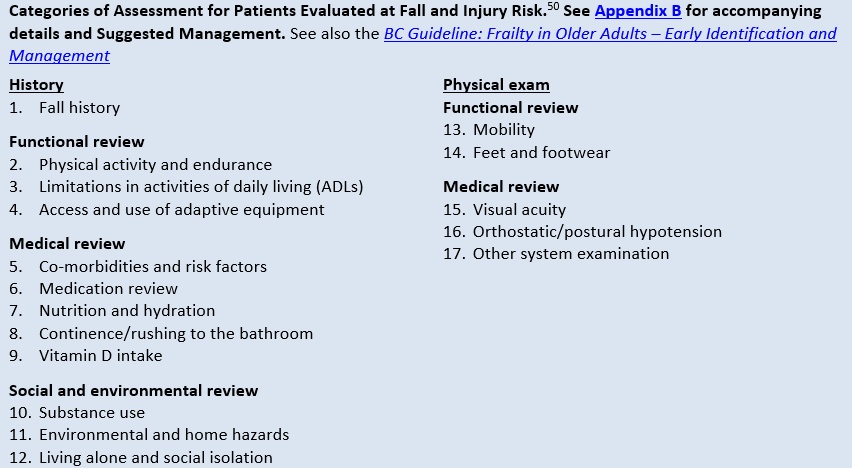The 9-Minute Rule for Dementia Fall Risk
Excitement About Dementia Fall Risk
Table of ContentsThe Definitive Guide for Dementia Fall RiskThe Dementia Fall Risk DiariesThe Basic Principles Of Dementia Fall Risk Dementia Fall Risk for DummiesThe Ultimate Guide To Dementia Fall Risk
You may be worried due to the fact that you have actually had a fall before or since you have actually observed you're starting to feel unsteady on your feet. You might have observed changes to your wellness, or simply really feel like you're decreasing a little. Whatever the factor, it isn't uncommon to come to be mindful and shed self-confidence, and this can quit you doing the important things you utilized to do and make you feel much more isolated.If you've had an autumn or you've started to feel unstable, tell your medical professional even if you feel great otherwise. Your medical professional can inspect your equilibrium and the way you walk to see if renovations can be made. They may have the ability to refer you for a falls threat assessment or to the drops avoidance solution.
This details can be acquired through interviews with the person, their caretakers, and an evaluation of their clinical documents. Begin by asking the specific regarding their history of drops, consisting of the regularity and scenarios of any type of recent falls. Dementia Fall Risk. Ask about any type of mobility issues they may experience, such as unsteady or difficulty walking
Conduct a thorough testimonial of the individual's medications, paying particular attention to those recognized to enhance the risk of falls, such as sedatives or medicines that lower high blood pressure. Figure out if they are taking numerous medicines or if there have been current changes in their medication routine. Examine the individual's home atmosphere for prospective dangers that could raise the danger of falls, such as inadequate illumination, loose rugs, or lack of grab bars in the shower room.
The smart Trick of Dementia Fall Risk That Nobody is Discussing
Guide the person through the fall danger analysis type, clarifying each inquiry and recording their actions properly. Make sure that the private comprehends the objective of the evaluation and really feels comfy supplying sincere responses. Compute the complete risk score based on the actions given in the assessment type. Determine the individual's danger classification (reduced, tool, or high) based on the total score and the existence of automated risky status factors.
Regularly check the individual's progress and reassess their threat of drops as needed. Provide recurring education and learning and support to advertise security and decrease the danger of falls in their daily living tasks.
Numerous studies have actually revealed that physical therapy can help to lower the threat of dropping in adults ages 65 and older. In a brand-new research study (that checked out drops danger in females ages 80 and older), researchers determined the economic impact of picking physical treatment to avoid drops, and they found that doing so conserves $2,144, consisting of all the hidden prices of your time, discomfort, missed out on life occasions, and the dollars spent for solutions.
What Does Dementia Fall Risk Do?
Examining your heart rate and blood stress measurements at rest and while you alter settings (from sitting or lying to standing). A straightforward test of your thinking (cognitive) capacities. Assessing your balance, toughness, and strolling capacity. An easy vision test. Assessing your feet and shoes. A home safety evaluation. Based upon the examination results, your physiotherapist will develop a strategy that is tailored to your particular demands.
Older grownups that have trouble walking and speaking at the very same time go to a greater risk of falling. Dementia Fall Risk. To read more assist enhance your security throughout day-to-day activities, your physiotherapist might make a training program that will challenge you to maintain standing and strolling while you do an additional task. Examples consist of walking or standing while counting backwards, having a discussion, or carrying a bag of grocery stores
Your physical therapist additionally can recognize which tasks you need to avoid to stay risk-free. Community-based drops avoidance programs aid people to: Reduce their fear of falling. Establish objectives for raising their physical task. Make their homes more secure. Work out a lot more to boost their strength and balance. These programs often are led by volunteer trainers.
Little Known Questions About Dementia Fall Risk.

Measles, or rubeola, is an extremely transmittable, intense viral infectious illness brought on by the read review measles virus. Look At This Some individuals think about measles as simply a breakout and fever that clears up in a few days; however, measles can create major health and wellness complications, particularly in children more youthful than 5-years-old. The most effective defense against measles is the measles, mumps, and rubella (MMR) vaccination.
Falls are an usual root cause of injury amongst older grownups. According to the CDC, in one year alone, fall-related injuries contributed to over $50 billion in clinical expenses (Dementia Fall Risk). In health center settings, older grownups are at particularly high threat of drops since their minimized wheelchair from being restricted to a room or bed.
A Biased View of Dementia Fall Risk

She has a clinical background of seizure condition and high blood pressure. She is obtaining an IV mixture and taking Gabapentin and Lasix. She has no history of drops, her stride is steady, and she invalidates without problems. The previous registered nurse states that she requires help to the washroom when she needs to go.
Instances of common autumn interventions/measures consist of: Making sure an individual's essential items are within reach. Past recognizing just how to utilize the Johns Hopkins Loss Risk Analysis Tool, it's vital that facilities include its usage into a more comprehensive autumn avoidance plan.